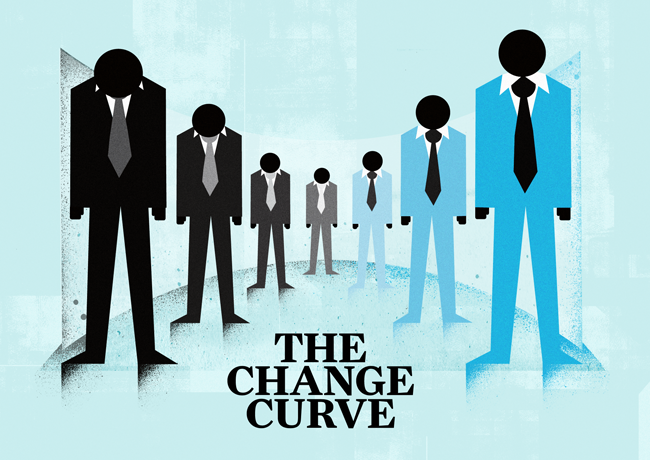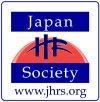By Dana M. Gallagher, Dean and Academic Director of The JHRS Academy
We live and work in an environment of unprecedented change.
Compared to just a generation ago, technology is almost mind-boggling, both in its application and potential. People from all over the world are working on the same teams, sometimes in a centralized locale, other times telecommuting from their home countries. Many of us are working in a 24/7 environment that requires high energy and focus, flexibility (and caffeine!) Our economy has forced many of us to do more with less. Today’s work world is not only exciting and challenging, but also temperamental and uncertain.
This is the face of change.
Big or small, change calls on each of us to adapt. However, knowing that adaptation is called for does not make it so. Each of us individually, and within teams and organizations, goes through a process of adjustment to accept and maybe even appreciate workplace change.
One of the difficulties of change is that it is inherently disorienting. We don’t necessarily see our final destination, or the guideposts along the way. On any trip to the Unknown, it is always helpful to have a map, and in the case of change, it is useful to understand the Change Curve.
The Change Curve
The Change Curve model describes the four stages most people go through as they adjust to change.
Source: http://www.thechangecurve.com/what-is-the-change-curve.php
STAGE 1 (Shock & Denial): Change either unexpectedly occurs, or, it is introduced or announced. Obviously, planned change is a bit less stunning, but often, people's initial reaction to change is shock or disbelief. (It is useful to note that there are usually a few people who think the change is positive, long overdue, or both.)
STAGE 2 (Anger & Resignation): Once the initial shock recedes and it becomes clear that change is here to stay, people often become negative. It is too simplistic to say, “People hate change”; change tends to stir our fears about how the change upsets life as we know it. Not all change is bad, but it is not all good either. Change is an opportunity for growth and improvement AND change usually brings some sort of loss. This can cause people to feel angry and afraid, and therefore, to resist the change. Because of the difficult emotions involved, Stage 2 is the most stressful stage of the Change Curve.
STAGE 3 (Acceptance & Letting Go): Once people have reacted negatively to the change, many of them will begin to look forward. They will begin to explore the opportunities and possibilities that the change brings. As they test what the change means to them, they can get down to the business of accepting what is good about the change, and dealing with its challenges too.
STAGE 4 (Understanding & Looking Forward): In this stage, people now accept the change, and become energized and excited about what good has or will come from it. Once the majority of a team or business is in Stage 4, the positive benefits of the change can now be harvested.
Following are some “DO’s and DON'Ts” related to the Change Curve:
DOs:
•Educate your colleagues about the Change Curve. It can provide a bit of orientation and a common language during a time of uncertainty.
•Learn more about the topic of Change Management. This is a big topic, and one that will never grow old.
•Communicate frequently and clearly about change as it is happening. Devise ways to control rumors, and to give your colleagues the most accurate information you have, in a timely way.
DON’Ts:
•Don’t squash people’s reactions to change. People need to have and voice their feelings in order to come to grips with change.
•Don’t assume that people accept change on the same timeline. Every workplace has its early adopters and its laggards.
•Don’t stop here! The more you learn about change, the easier it is to lead it, to implement it, to thrive within it.
The only certainty in life is change. And since adapting to change is perhaps the most critical skill for the 21st century, it behooves us as HR professionals to expand our own change management capacity. Let’s accept the challenge to become more open to and easy with change, by identifying our own learning edges and resistance, and by thinking, reading and talking about change with each other. We welcome your comments.--DG
Suggested Readings:
Change Management: Making organization change happen effectively, Mind Tools 2010. http://www.mindtools.com/pages/article/newPPM_87.htm
Kotter’s 8 Step Change Model; Mind Tools 2010. http://www.mindtools.com/pages/article/newPPM_82.htm
Immunity to Change: How to Overcome It and Unlock the Potential in Yourself and Your Organization, Robert Kegan and Lisa Lahey. Harvard Business School Press, 2009.
Beyond the Wall of Resistance, Rick Maurer. Bard Press, 2nd Edition, 2010.
Building the Bridge as You Walk On It, Robert E. Quinn. Jossey-Bass, 2004.
Other posts by The Japan HR Society:








Comments
Anonymous (not verified)
August 10, 2010 - 13:35
Permalink
Do people really don't like change?
"Interesting article. Spent a good part of my career introducing change into numerous Japan-US multi-cultural workplaces, mostly kaizen in factories, and customer service improvement initiatives for front line workers in various service industries.
We've all heard the popular adage that "people don't like change." And it's one of those assumptions that seem self-evident.
I'm here to tell you that this is not entirely true.
What IS true is that people don't like change IMPOSED ON THEM.
If the government knocks on my door and says they're going to build a highway through my living room, then I'm going be very resistant to moving out of my house (if not downright distraught).
But if I decide (on my own) that I'm going move to Hawaii, then suddenly change becomes a positive, exciting thing.
Same with employees: if change is THEIR idea, then they are much quicker to embrace it.
In concrete terms our approach was:
1) Educate employees (NOT train, but big-picture-connect-the-dots EDUCATION)
2) Teach employees how to collect the data themselves
3) Have them input the data (if you're using graphs, etc.)
4) Analyze the data with them
5) Brainstorm improvement ideas together (while "guiding them")
6) Prioritize the best ideas TOGETHER
7) Develop an ROI and submit to upper management for approval (if necessary)
8) Support, coach and help the employees while THEY implement change
Granted, not all change can be done organically from the bottom up, but the education dimension still works even when "change" is deployed top-down. Problem is most corporations are so focused on nuts-and-bolts training that they neglect to give the troops the big picture. This effectively stretches that Change Curve and employees tend to be much more resistant.
What I found, was that when we used the approach outlined above, not only did our employee teams embrace the change, but it would've been mighty tough to STOP them from implementing the change, because THEY OWNED IT. it was their idea!
Just another perspective from someone who worked in the trenches. "
Aloha :-)
- Tim Sullivan